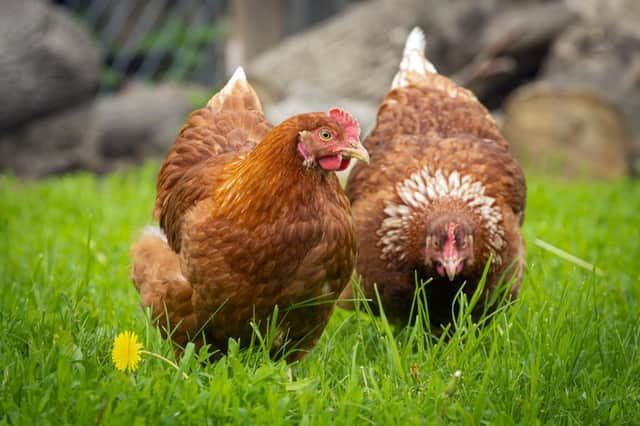Passions: 'Even if our chooks didn’t produce lovely orange yolkers, I’d still keep them'


You might think it was a case of nominative determinism in my case, but I’ve always wanted to keep hens.
I’ve found it a low cost hobby, with a small homemade hen house, and ex-commercial birds from The British Hen Welfare Trust.
Advertisement
Hide AdAdvertisement
Hide AdThese rescue chooks are usually around 72 weeks old but with plenty of laying left in them.
They arrive somewhat bemused and bedraggled, some bald and with visible injuries.
The advice is to keep them shut inside for a day or two, before letting them out to a fenced space.
We’ve done this a few times now, and there is great joy in watching these poor creatures emerge into the sunshine, for possibly the first time, and tentatively try a scratch of the soil.
Within an hour they start to act like hens, and within days their plumage begins to grow back, their combs plump up and redden and they have sorted themselves into a strict hierarchy - the original pecking order.
Our current six girls are free range and led by the indomitable, brave and vocal Gloria, who acts as their spokes-hen if they wish to complain that their breakfast is late, to moan about the weather - or to protest that Ted the labrador has licked one of them, again.
They are remarkably tame and curious, which can have its downsides. Doing any digging or weeding in the garden will attract a close audience of six at your elbow, crooning encouragingly for you to unearth a delicious grub.
If bored, they line up on the kitchen windowsill to peer in, with plenty of jostling as there isn’t quite room for six fluffy bottoms, side by side.
Advertisement
Hide AdAdvertisement
Hide AdAnd if we unwisely leave a door open they’ll wander into the kitchen. Gloria once discovered a stray grape on the floor and always returns to that spot to check if there might be another.
Even if they didn’t produce eggs, I’d keep them, but they lay about five lovely orange yolkers a week each, and can keep going for years.
The greatest wonder perhaps is that in Autumn, their laying rate declines to nothing for a few weeks before starting up again as soon as they detect the infinitesimal lengthening of daylight after the winter solstice.
I dismissed this as a piece of folklore until it started happening to us. It is true, the first egg after the lull usually appears on Christmas Day, just another of their many gifts.
Kirsty McLuckie is Property Editor of The Scotsman